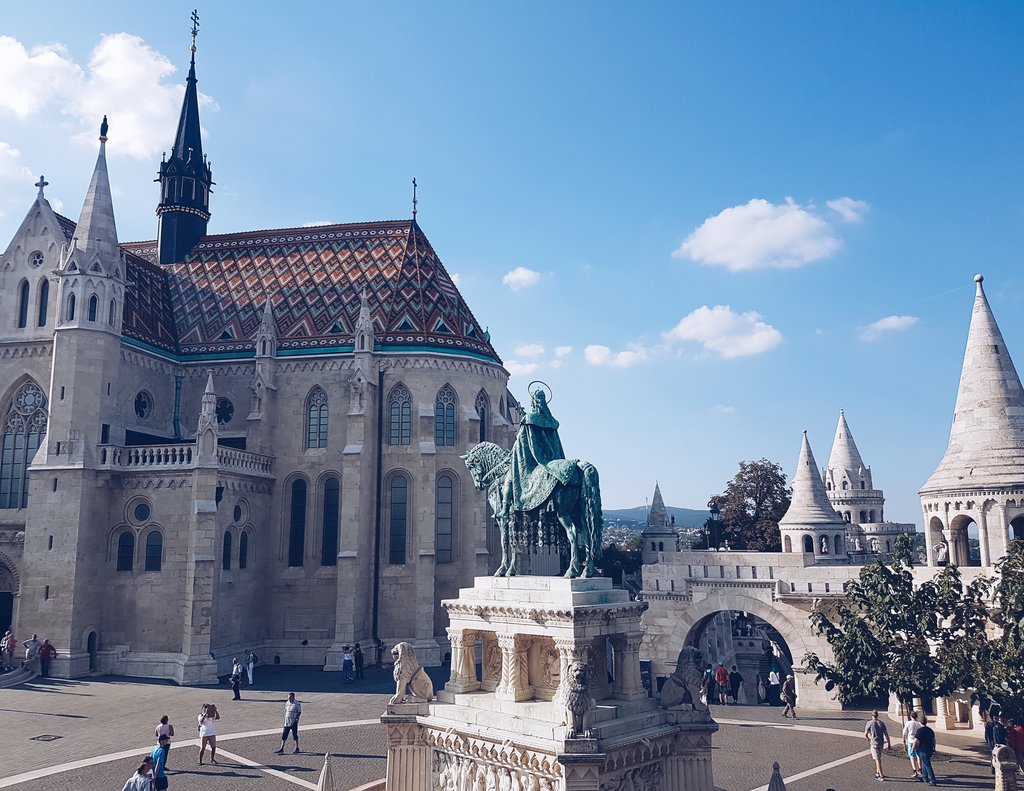Visitor’s Guide to Fisherman’s Bastion, Budapest
“With its medieval-style turrets, enchanting staircases and fairy tale balconies, Fisherman’s Bastion is one of the most beautiful spots in all of Budapest. If you’re planning a holiday, take a look at this guide to Budapest’s Fisherman’s Bastion and learn more about what to see and do in the area.
Brief history of Fisherman’s Bastion
——————————————-
Fisherman’s Bastion was built on top of former defensive structures on the hills of Buda Castle. The walls of the strong castle, which overlooked Watertown, were constructed in the 16th century but have been destroyed and rebuilt. This is where the fishermen of Budapest lived and worked, which is how Fisherman’s Bastion got its name. The castle stopped being used for fortification in 1874, which is when the bastion was designed as a communal space for citizens.

What is Fisherman’s Bastion?
———————————–
Fisherman’s Bastion is a modern community structure that was built for the Hungarian Millennium celebrations for Hungary’s 1000th birthday. Though newer, the design is distinctly medieval as a throwback to Hungary’s history and features neo-Romanesque styling. It was also designed to serve as a viewing point for citizens, rather than a defence structure. Instead of having narrow walkways and few viewpoints for a defence structure, the design featured open areas and wide stairways and arches for excellent vantage points of the Danube and surrounding city. It’s still used for that purpose, with many travellers visiting to see the panoramic views of the city from the towers and terrace and take photos of the architecture.
Features of Fisherman’s Bastion
————————————–
Fisherman’s Bastion has 7 towers that are symbolic of the original Hungarian chiefs who settled the Carpathian basin in 895, birthing the nation. In addition to the statue of St Stephen, Hungary’s first king, Fisherman’s Bastion also features statues of John Hunyadi, a 15th-century military leader, and St George. At the top of the staircase, you’ll find statues of 10th-century sentry soldiers.
Views from Fisherman’s Bastion
————————————-
Experiencing all that Fisherman’s Bastion has to offer starts with planning. You can see the Danube, the second-longest river in Europe, and the Széchenyi Chain Bridge, the city’s most famous bridge that once connected Buda with Pest. Other sights include St Stephen’s Basilica, the Four Seasons Gresham Palace, the Hungarian Parliament Building and the Budapest Eye, a massive Ferris wheel with stunning city views.
Fisherman’s Bastion is on one side of a public square, so you can visit any time you wish. Early in the morning is the best time to avoid crowds and take photos, including excellent sunrise shots, but you can go any time of day to see its wonders. The scenic upper terrace is a popular spot for photos, but it has scheduled hours and requires a ticket. The terrace is open from 9 a.m. to 11 p.m., and you can get a ticket at the office near the base of the stairs. If you come outside of those hours, the upper terrace is free to visit. Fortunately, the rest of the area is free as well. You could also buy a combination ticket that gives you access to both upper terraces and the nearby Matthias Church.

How to get there and get around
————————————–
You can reach Fisherman’s Bastion by taking Budapest’s extensive metro system from the Batthyány ter station and zigzag up the hill, or you can disembark at Széll Kálmán Square and walk for 15 to 20 minutes. You could also take bus 16 from downtown Pest to Disz Square. If you prefer to walk, you can take the Chain Bridge and use the funicular or stairs to climb the hill.
Surrounding Castle District
———————————-
Fisherman’s Bastion is located in the Castle District, which is home to many excellent attractions. Matthias Church, or the Church of the Assumption of the Buda Castle, is a popular landmark. It’s located in Trinity Square and features some of the most striking architectural features, making it a popular location for coronations, weddings and other special events. You can take a guided tour of the church to learn about its history. You could also see the statue of King Stephen I, the first king of Hungary, and the Hospital in the Rock Nuclear Bunker Museum, a secret hospital from World War II.
Fisherman’s Bastion is one of Budapest’s most notable attractions and a great place to experience the history and culture of the city. If you’re planning a trip to see the wonders of the city, take a look at Budapest holidays and other things to do in Budapest from Expedia to plan your itinerary!”
More Articles With City break
Finding wheelchair-accessible things to do in London can often be a tricky task, but a new app makes it a lot easier.
Ready for your next great holiday? To help you prepare, we’ve created a simple travel checklist to make sure you’ve covered the essentials.
We rounded up 18 locals-only secrets in some of the world’s most beloved cities to help you feel like an insider, no matter where your travels take you.
Top travel tips from Jake Graf: a couples guide to London
The ultimate whatever-the-weather London staycation guide